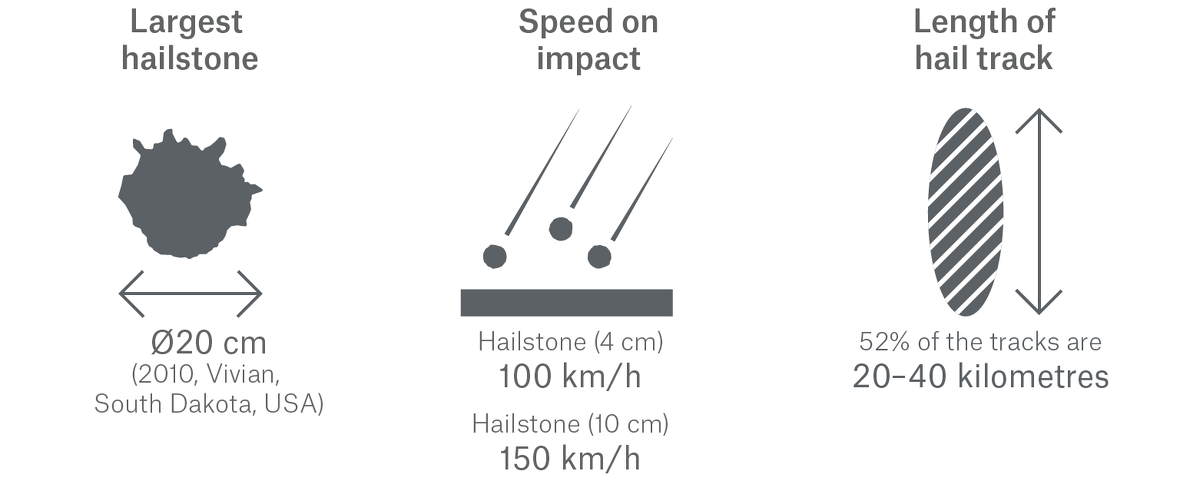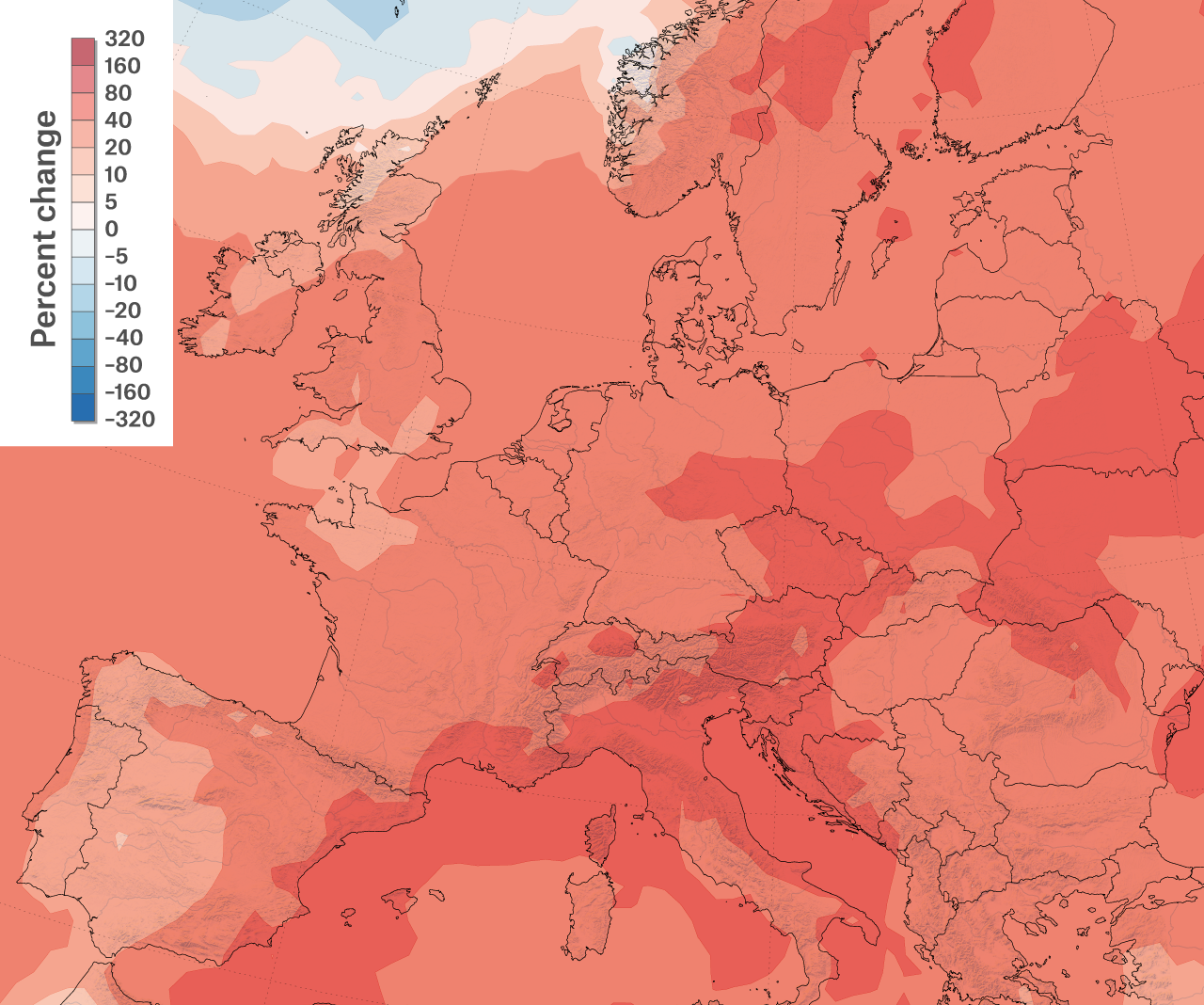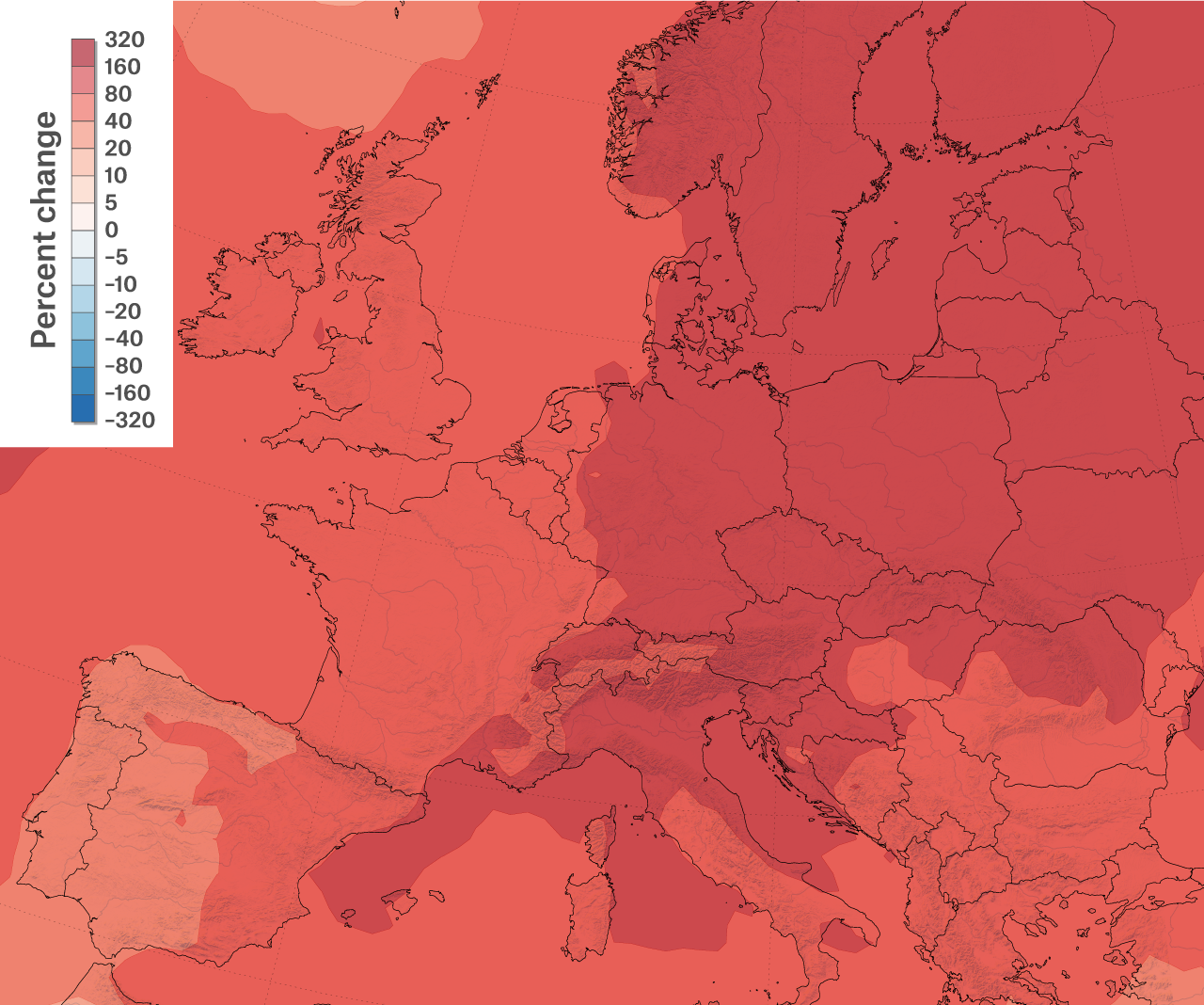

The new study from Munich Re and the ESSL assessed whether hailstorms like this could become more frequent in future in Europe because of climate change, and applied a special data analysis method with 14 regional climate models. The study examined two climate scenarios and their effects:
- a moderate scenario, where the 2°C target is not achieved, but relatively consistent climate protection measures lead to global warming of roughly 2.4°C compared to pre-industrial times (what is known as the IPCC RCP4.5 scenario)
- a business-as-usual scenario, where the world continues as it has up to now, and global warming of more than 4°C occurs (RCP8.5 scenario)

The results:
- Hail events with hailstones larger than 5 cm in diameter are particularly relevant for claims. According to the study, a 30-40% increase in such events can be expected under the moderate scenario almost everywhere in Europe, with an even greater increase in parts of Italy, on the eastern Adriatic coast, and in southern France.
- The results were more extreme for the business-as-usual scenario: If climate change continues unabated, severe hail events may occur almost twice as frequently in large parts of Central and Eastern Europe, as well as in Italy, parts of southern France and on the Adriatic coast.
- Storms with hailstones more than 2 cm in diameter do not cause severe damage to buildings, but they can destroy portions of a crop, or even entire crops, across a region. The study concludes that, even in the moderate scenario, there will generally be a 10-20% increase in hailstorms of this kind in Europe. If global warming continues unabated, an increase of up to 80% may be expected, particularly in Italy, parts of Germany, and in Eastern Europe.

Influence of anthropogenic climate change likely
The new analysis complements the first part of the project, which analysed the trend in hailstorms in the past. This discovered a significant increase in hailstorms over the last four or so decades, particularly in northern Italy and on the Adriatic coast. An influence from climate change is therefore plausible, since the increase in temperatures can explain the higher humidity in the lower atmosphere. This, in turn, favours the development of severe thunderstorms.
Sensitive building façades and the high assets in Europe signal a sharp increase in loss potential in conjunction with a rise in exposure. For this reason, the study underlines how important loss mitigation measures are, since more frequent hailstorms are expected in Europe even if climate change is slowed.

Munich Re Experts


Related Topics
Newsletter
properties.trackTitle
properties.trackSubtitle

